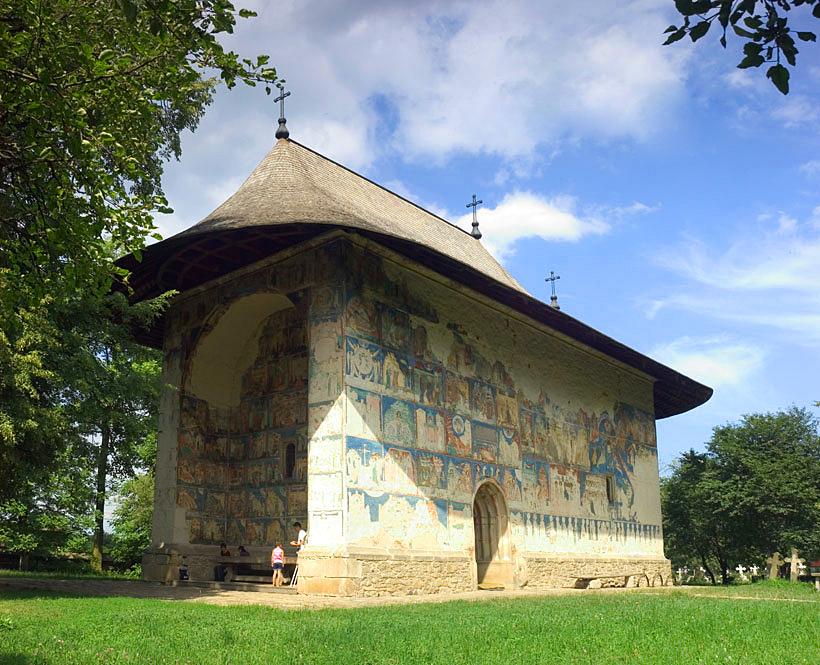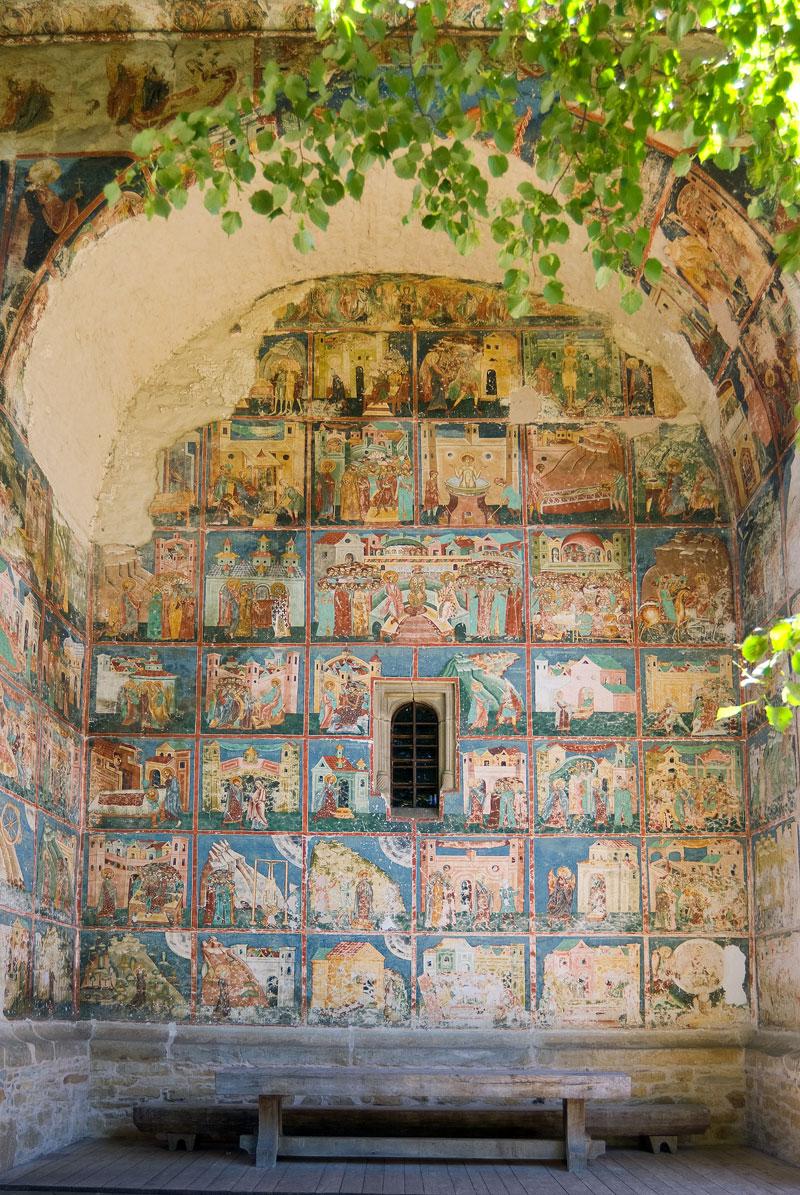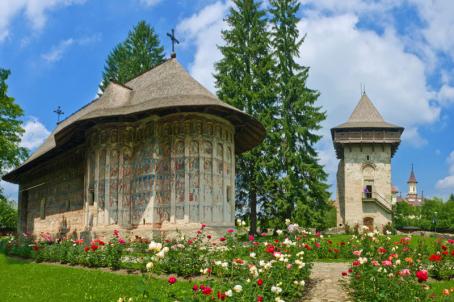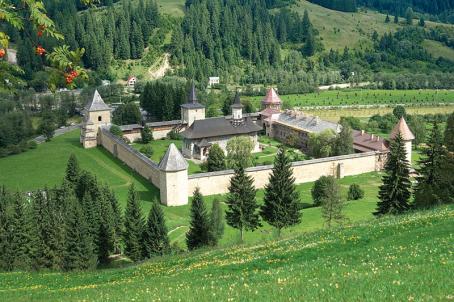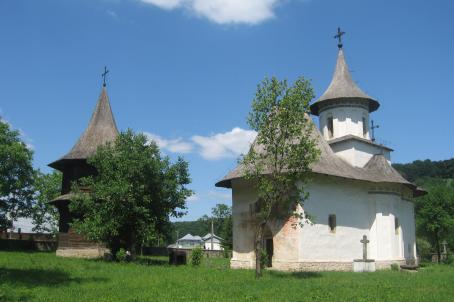Arbore Church
The church with the patron Saint John the Baptist's Beheading from the village of Arbore is the foundation of the noble Luca Arbore, from 1503, during Stephen the Great ruling. The exterior paintings were made in 1541, on a green background. Here the painters used 5 shadows and 47 nuances, in combination with red, blue, yellow, pink and ochre. The recipe of the colours used for the frscoes is still unknown, the secret of the vegetal colours and of their combinations was buried with the Moldavian painters.
